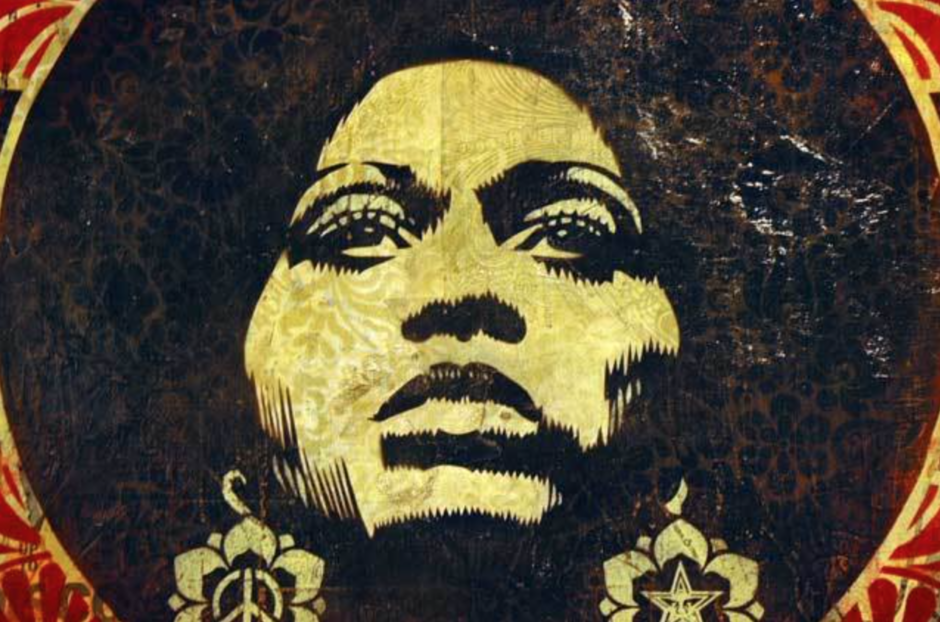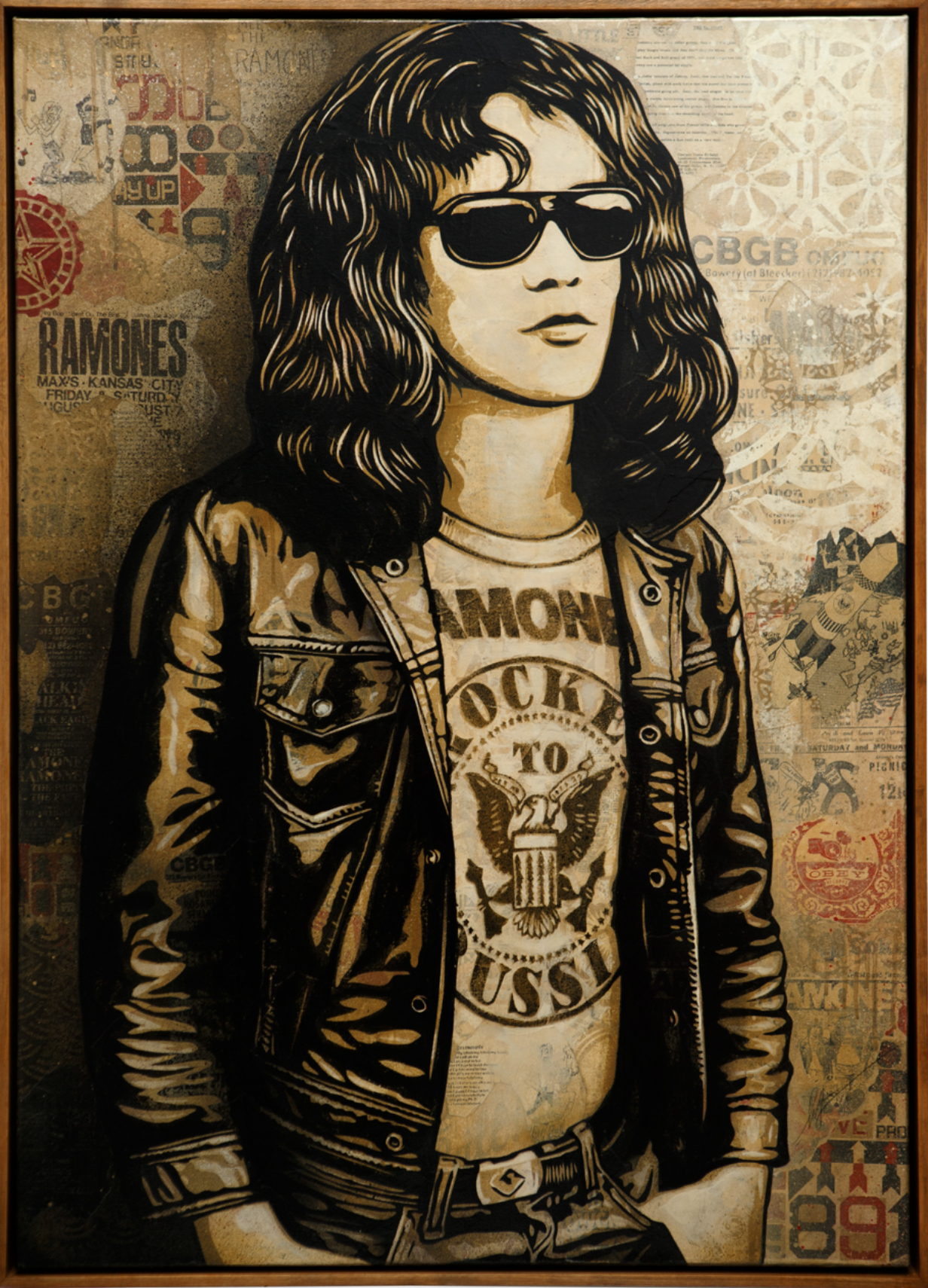SHEPARD FAIREY: Nineteeneightyfouria
Shepard Fairey’s blood sugar count is perilously low and it’s little wonder, given that preparations for the US graffiti artist’s biggest ever gallery show are behind schedule. The mounts have yet to go up on the canvases, the prints all came back late from the framers and there’s only an hour to go before the all important buyers descend on the Stolen Space gallery’s giant rented warehouse facility off London’s Brick Lane.
Fairey – who suffers from diabetes and occasionally DJs under the moniker ‘DJ Diabetic’ – says that he’s experiencing a Mañana attitude that he associates more with his native California than London but he remains confident that everything will be in tip-top condition in time (and it is). The fact that around 50% of the pieces have already sold also helps, of course.
While the attitude to organisation may be lax his latest exhibition is anything but. Fairey, who attained fame through his global street sticker and poster campaign ‘Andre the Giant has a posse’ which later evolved into ‘Obey Giant’, has compiled 180 pieces of work ranging from small posters through to giant canvases that all deal with the issues George Orwell picked up on in his acclaimed novel ‘1984’ – hence the show’s title “Nineteeneightyfouria”.
“The book 1984 was set in London and there seems to be no distress involved in the recent increase in surveillance and fewer rights,” explains Fairey. “In ‘1984’ it’s total mind control and total control of information and propaganda but now people seem so sedated by entertainment that they seem to have lovingly embraced it. I call it ‘happy indifference’.”
Words and themes inspired by Orwell’s vision run throughout the work. There are CCTV cameras, oil pump handles, adulterated dollar bills and lots of slogans such as “big brother is watching you” and “blind acceptance can be hazardous”.
In addition to the gallery work Fairey also spent nine days in the build up to the exhibition driving around London in a van with a crew of people pasting up posters. “We managed to put up close to 50 on the street which is more than I’ve done at any time in my life. We did places like Hammersmith, Crouch End, Camden, Brixton and all over East London.”
During that time he was only stopped twice by the police: once in a small borough on the outskirts of London and once in Soho. “The cops here are very polite and they let me go both times,” says Fairey. “The places were abandoned and boarded up and the cops don’t know the difference between me and someone who is out promoting a club night.”
This was an unexpected break for an artist who has been arrested 13 times in the US thanks to a crackdown on graffiti crime. “In New York it’s zero tolerance. I put up one sticker in New York once and went straight to jail. But then there’s always a risk with what I do. It’s hard to conceal and hard not to get caught when you’re doing something on this scale.”
Fairey says that he feels more at home on the street where his work is exposed to more passers-by. What then constitutes the ideal spot for one of his bombings?
“I look for places that are abandoned and already have graffiti. You’ve frequently got to shimmy drainpipes or climb steep roofs to find a spot that’s appropriate. You have to find the right balance between visibility, longevity and harmonious integration. Art should be able to integrate into the environment and enhance it. Freedom of speech should be part of the tax payers’ rights and street imagery shouldn’t just be limited to advertisers.”
Unfortunately this cuts both ways and Fairey’s own work has been the victim of serial taggers. In the States he’s been hit by another urban artist known as ‘the Splasher’ and, in the UK, his work has also been targeted.
“The first night I got here my friend told me about this wall on the side of his house so I went and put something up, and the next morning posters had gone up all over it. I learnt my lesson very quickly and I’ve now gone up higher than anyone else can go.”
Most of his work starts out as an illustration done by hand and then this is scanned into a computer from where he can start to construct the images using a combination of stencils and collaged backgrounds. “Whatever it takes to make the piece authentic,” he explains. Fairey has his own screenprinting press on which he makes his smaller works but he uses a printer to do the larger pieces (the same guy that Banksy used for his show in Los Angeles last year).
The organisation of the London show, which closed in November, ate up a lot of Fairey’s time but after it draws to a close he says that this body of work is finished and he will be taking time out to experiment and work on new stuff.
“I’ve been showing constantly for years and each show has been a natural extension of the previous one, which means that I haven’t had the chance to experiment with new techniques and looks.”
As for what direction this will take him, for the moment at least, he says that all avenues are open.
Simon Creasey [2008]








